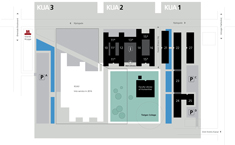CAP Round Table: 'Corporate Groups and Communities: Convening in Private, Acting in Public'
The aim of the workshop is to assess, reflect upon and define more adequately groups, such as those of soldiers, age groups, mystery-cult groups, boards of religious functionaries, foreign residents etc., whose precise nature can seem elusive or not to conform to concepts such as ‘private’ and ‘public’. Some associations such as those of neoi and other groups associated with the gymnasium display many features normally attributed to private associations, while performing important public functions similar to those of civic subdivisions. Others, such as associations of soldiers or magistrates appear to be formed by agents of the state, but nevertheless chose the organizational form of the private association.
If we try to test these cases against the criteria as formulated in the guidelines of the CAP Inventory, a need for clarity and clarification becomes apparent. These criteria have guided us through the collection and processing of the material registered in the database. Yet, during this process questions have often arisen as to whether a group could be indeed defined as an ‘association’ (a formally organized group), and in other cases, whether an association was indeed ‘private’ (a non-constitutional part of the state, the foundation was not mandated by the state nor did membership form a requirement for citizenship). Difficulties have regularly been encountered in deciding these questions, since the structure exhibited by associations was not necessarily their exclusive prerogative. Organization, hierarchy and independent activities all pertain to other forms of communal life, and indeed civic structures too. Likewise, the concept of ‘private’, although it has been employed in order to stress the exclusivity of the group and its detachment from the state and political organization, can occasionally be seen as inadequate to describe the nature of the group, since it presupposes the notion of ‘public’ with which it is juxtaposed.
Groups could act in a public/official capacity, they could undertake a collective action, and communities could perform associational activities and/or display ‘association-like’ organizational structure. Taking all these factors into consideration, we would like to ask you to consider and reflect upon the following:
- Movement/fluidity in the grey zone between public and private: How does the relationship between association and state change over time? Is it possible that some associations, initially private, were co-opted by the state? Or, inversely, that some public bodies eventually gained some form of independence from the state?
- To what extent did new forms of political power (e.g. Hellenistic monarchies, Roman empire) influence the workings of groups and communities? Did changes in the political, social and religious landscape give way to new forms of organization and communal life and conversely, how did associations respond to these changes?
With this Round Table we hope to explore the border area between ”public” (in the sense of ”pertaining to the State”) and ”private”; in particular, we wish to focus on the fluidity of these conceptual boundaries in certain specific cases, providing thus a vibrant forum for discussion between members of the Copenhagen Associations Project and its collaborators.
To download the programme click here.
Speakers and Titles:
Dr. Roland Oetjen (Kiel): Demesmen and Non-Demesmen in third- century Rhamnous and Eleusis
Dr. Sophia Zoumbaki (Institute of Historical Research, Athens): Groups of Romans abroad: reflections on their elusive nature, organization and role in the host communities
Dr. Nikolaos Giannakopoulos (Thessalonike): Private Association or Public Body? The Gerousiai of the Greek Cities in the Imperial Period
Dr. Benedikt Eckhardt (Bremen): The Young, the Old and the Blessed. Corporate Bodies of Elite Reproduction in Roman Asia Minor
The seminar is organized by The Copenhagen Associations Project, Saxo Institute. All interested are welcome.

